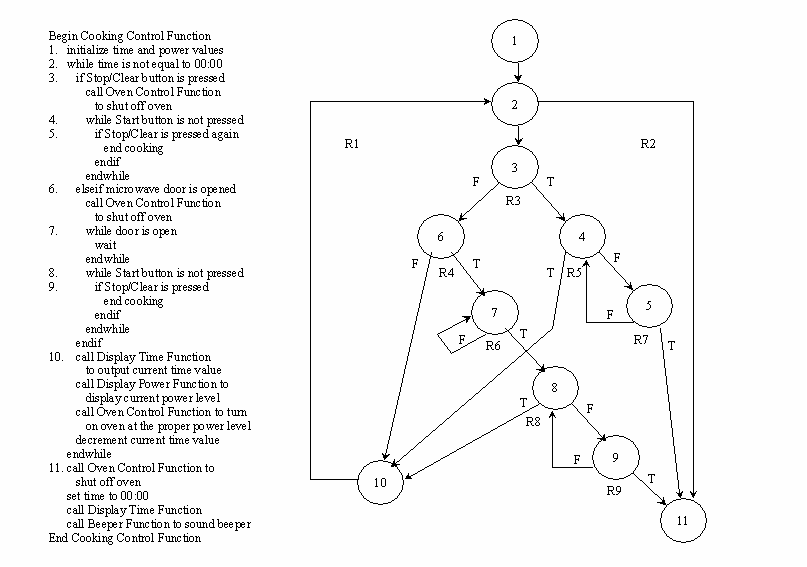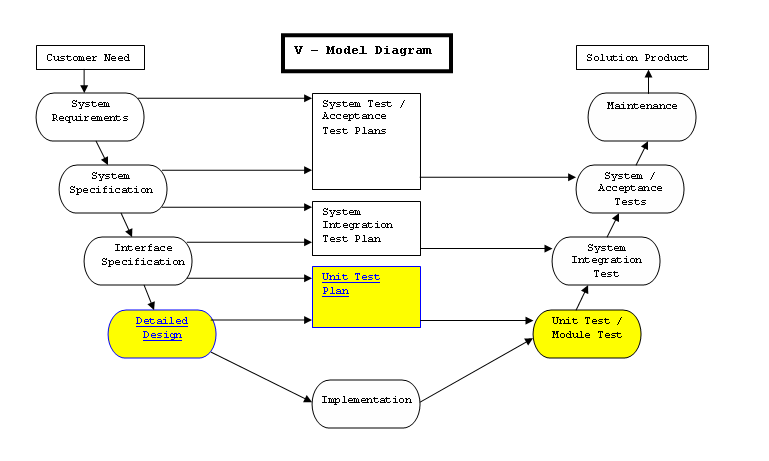Unit Testing
Unit
tests are structural,
white box tests that should attempt to provide
maximum execution path coverage including off-nominal (error) paths.
Unit testing is typically highly coupled to code development activities with high frequency iterations and is therefore difficult to distill from the coding activities. For this reason, this software development process includes unit testing as part of the implementation phase.
Unit tests may involve using interactive debuggers in order to force the flow of execution down certain paths that are hard to reach using extern stimuli. Unit testing also requires the creation of test harnesses, test stubs, and code instrumentation.
There are a variety of sophisticated tools that can be used to test for code coverage, adherence to coding guidelines, and memory leaks. As mentioned earlier, interactive debuggers can be of great assistance both for debugging and testing esoteric paths. IDEs or Integrated Development Environments often include some of these tools in a consistent, seamlessly integrated user interface.
There are two basic classes of code analysis tools, static analyzers and dynamic analyzers. For the sake of convenience, static analyzers can be run as part of a build by making the tool invocations targets of the makefile. Often times, dynamic analyzers require the placement of code hooks in order for them to perform the analysis at run-time. These code hooks can also be injected into the code at build time via tool invocations made in the makefile.
In the end, simple source code instrumentation which requires no external tools can be the most effective way to unit test source code thereby gaining confidence in the correctness of its implementation. The problem with overly intrusive forms of testing, like using interactive debuggers in timing-sensitive scenarios, is that sometimes the mere act of testing changes the very nature of what is being tested. Debuggers, memory profilers, and other types of run-time-active tools can have a huge impact on the speed at which code gets executed. If the test scenario is timing sensitive, then these types of tools would only get in the way. It is important to use the correct method for a given testing situation.
The following unit-testing-related topics are described on this page:
Unit testing is typically highly coupled to code development activities with high frequency iterations and is therefore difficult to distill from the coding activities. For this reason, this software development process includes unit testing as part of the implementation phase.
Unit tests may involve using interactive debuggers in order to force the flow of execution down certain paths that are hard to reach using extern stimuli. Unit testing also requires the creation of test harnesses, test stubs, and code instrumentation.
There are a variety of sophisticated tools that can be used to test for code coverage, adherence to coding guidelines, and memory leaks. As mentioned earlier, interactive debuggers can be of great assistance both for debugging and testing esoteric paths. IDEs or Integrated Development Environments often include some of these tools in a consistent, seamlessly integrated user interface.
There are two basic classes of code analysis tools, static analyzers and dynamic analyzers. For the sake of convenience, static analyzers can be run as part of a build by making the tool invocations targets of the makefile. Often times, dynamic analyzers require the placement of code hooks in order for them to perform the analysis at run-time. These code hooks can also be injected into the code at build time via tool invocations made in the makefile.
In the end, simple source code instrumentation which requires no external tools can be the most effective way to unit test source code thereby gaining confidence in the correctness of its implementation. The problem with overly intrusive forms of testing, like using interactive debuggers in timing-sensitive scenarios, is that sometimes the mere act of testing changes the very nature of what is being tested. Debuggers, memory profilers, and other types of run-time-active tools can have a huge impact on the speed at which code gets executed. If the test scenario is timing sensitive, then these types of tools would only get in the way. It is important to use the correct method for a given testing situation.
The following unit-testing-related topics are described on this page:

The cyclomatic complexity of any connected graph, G, is calculated by using the following formula:
CC(G) = Number_of_Edges - Number_of_Nodes + 2
CC (G) = 18 - 11 + 2 = 9
Nine regions were identified in the flow graph for the Cooking Control Function. These regions are labeled R1 through R9 and are shown in the table below.
|
Region |
Path |
Test |
|
R1 |
1, 2, 3, 6, 10, 2,
11 |
Test 1 |
|
R2 |
1, 2, 3, 4, 10, 2,
11 |
Test 2 |
|
R3 |
1, 2, 3, 5, 4, 10,
2, 11 |
Test 3 |
|
R4 |
1, 2, 3, 4, 5, 11 |
Test 4 |
|
R5 |
1, 2, 3, 6, 7, 7,
8, 10, 2, 11 |
Test 5 |
|
R6 |
1, 2, 3, 6, 7, 7,
8, 9, 8, 10, 2, 11 |
Test 6 |
|
R7 |
1, 2, 3, 6, 7, 7,
8, 9, 11 |
Test 7 |
|
R8 |
1, 2, 3, 6, 7, 8,
10, 2, 11 |
Test 8 |
|
R9 |
1, 2, 11 |
Test 9 |
V-Model Diagram
The unit test suite needs
to correlate very closely to the functional flow and data defined in
the detail design. Unit tests should exercise as many paths as possible
to ensure that algorithms are correctly implement, error handling works
correctly, and there are no serious flaws such as infinite loops or
infinite recursion.

